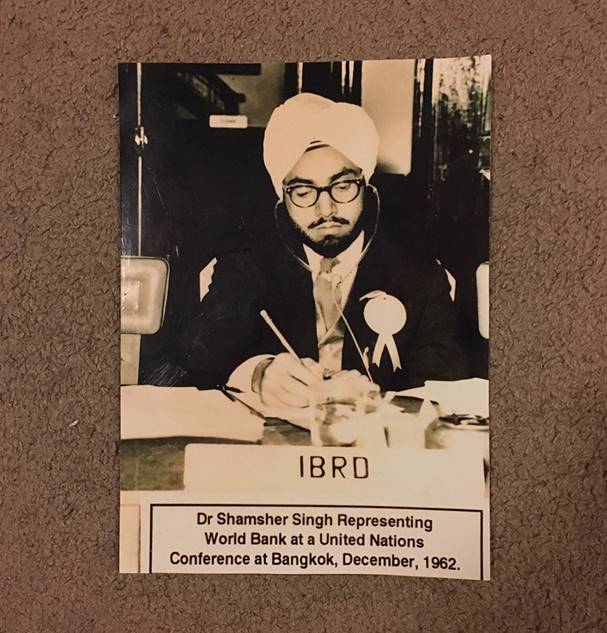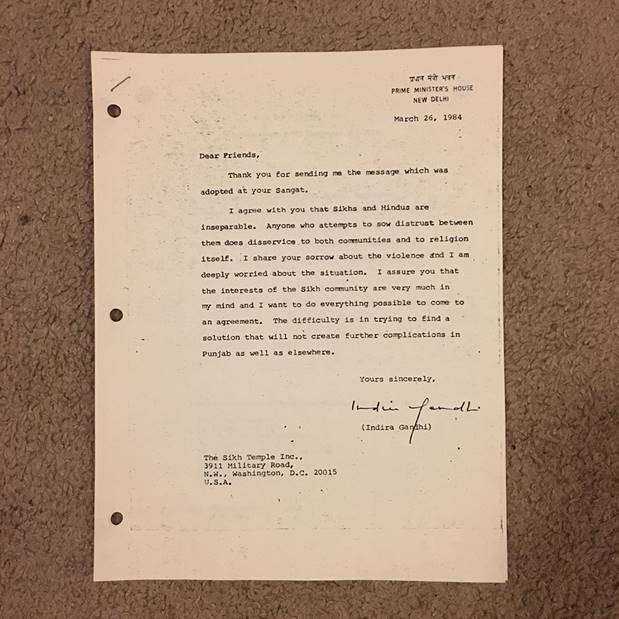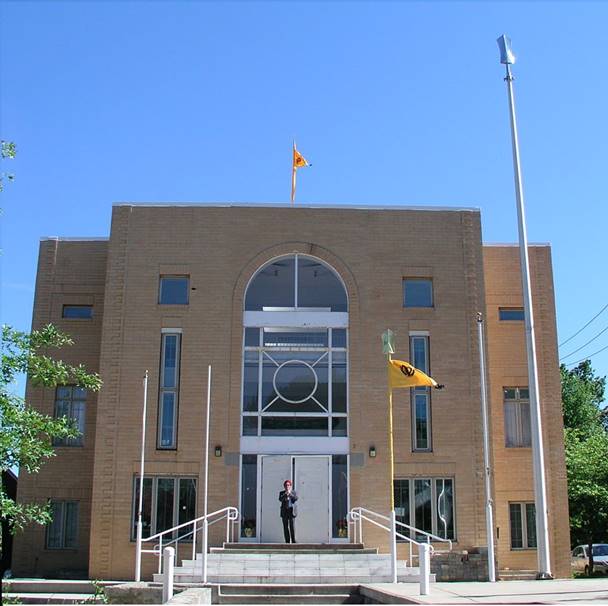Mini-Delhi in DC: A 90-year-old Sikh-American recalls how he built a cultural nest in the US capital
By Kavya Balaraman
Mar 06, 2017
Richard Nixon, Indira Gandhi, Dalip Singh Saund – many historical figures make an appearance in the story of Shamsher Singh Babra.

Shamsher Singh Babra in his Washington home.
When Shamsher Singh Babra first set foot in Washington DC in 1955, he remembers, it was a land very different from Trump’s America. For one, Babra was one of only a handful of Indians in the city. There were no Indian grocery stores, no gurdwaras, and desi festivals were not celebrated. In a few decades, the number of Indian immigrants in the US would multiply dramatically and Babra would fulfil his dream of building Washington’s first gurudwara ever – the National Gurudwara, a block north of Washington National Cathedral – but first, he had to understand his new home.
“Coming to America was very refreshing,” the 90-year-old recalled. “But food-wise, and culturally, there was nothing. I had to create it.”
Babra had wound up on foreign shores entirely by chance. Originally from Lahore and a “product of Partition”, as he calls himself, his family migrated to Delhi immediately after Independence. He continued studying there and was considering what to do next when he came across an article written by his cousin about Britain.
“He said, if anybody can work and study, there’s an opportunity in Britain,” said Babra. “I thought that if anybody can do it, then I can too, so I went there without any plans, without admission to any college and stayed at the gurdwara in London.”
During the two years he spent in London, Babra managed to secure himself a job at the Indian High Commission. The stint was informative, he said, in that it taught him the basics of working in an office and fostered a deep enthusiasm for precision writing – penning down thoughts as sparingly and accurately as possible – which he practices to this day. Soon, he began to contemplate a PhD.
“I had admission to the London School of Economics, but it needed a full-time devotion to studies,” he said. “I wanted to both work and study at the same time – and I discovered I could do it in America.”
Making it in America
The Washington that Babra came to in 1955 was very different from what it is today – smaller, sleepier, and much less cosmopolitan. It was like a small town, he recalled, not even as developed as Delhi was at the time. Its Indian community was comprised entirely of the Indian embassy staff, most of whom were temporary. Babra remembers longing for Indian food during his initial days in Washington, and only being able to get it at an embassy worker’s house – grocery stores didn’t stock the lentils and spices he would need to cook himself a simple meal, but embassy employees had a special licence to import staples from India.
“I decided to build my own cultural nest,” Babra said. “One’s cultural nest is important for one’s stability of mind, heart and emotions.”
Over the last few decades, Babra has been instrumental in building the American capital’s thriving Indian community. He started out modestly, organising celebrations for Guru Nanak’s birthday and other special occasions, at the homes of various embassy officials and encouraging them to serve langar. The gatherings were small and infrequent, only twice or thrice a year. But then, the American University in Washington DC asked him to host Guru Nanak Jayanti on their premises and slowly, he began to create a mini-Delhi right in the heart of America’s capital. He learnt to find rice in neighborhood grocery stores, and a Spanish store in the city began to stock turmeric, which he could use in his cooking. Babra devoted his days to studying, working and then immersing himself in community affairs.

A picture of Babra taken at a UN conference in 1962.
“I had no time to be lonely,” he said. “I was absorbed around the clock. Loneliness comes when one is not immersed in things, and I was totally immersed in this.”
In 1962, Babra did three important things: he began working at the World Bank, where he continued to be employed until 1987; he bought a house – the first Indian to do so in Washington, he says – and he got married. His wife is Welsh but converted to Sikhism before the wedding.
Simultaneously, Washington’s Indian community continued to grow. Under the Kennedy government, US immigration rules became distinctly laxer and Indians with bachelor degrees began to pour in with their wives and families. Babra’s social circle began to expand, as did his political connections – he was friends with Dalip Singh Saund, the first Indian-American to be elected to the House of Representatives, and was also on good terms with the parents of Kamala Harris, currently in the Senate.
In 1981, Babra managed to buy two small plots of land. He decided to write to Indira Gandhi, then prime minister of India, and invite her to lay the foundation stone. While she could not travel to the United States without an official invitation, they continued to correspond until right before her assassination. And Babra finally did manage to raise the money for his gurdwara, which began construction in 1999.

A letter to Babra from Prime Minister Indira Gandhi shortly before her assassination.
His relationship with racism in the United States has been complicated. During his two years in Britain, he recalls coming face to face with outright discrimination – including being denied housing.
“There was a very sophisticated form of colour discrimination,” he recalled. “In those days, the custom to advertise a house was to put a little card which said, ‘room for rent’ in the local store. But as soon as they opened the doors, they would say sorry, it’s rented. And we knew it wasn’t because those cards stayed there.”
America was a refreshing change – he had no trouble finding lodging, or work. But subtle and not-so-subtle forms of discrimination did crop up a couple of times over his six decades here, he said. One weekend in the late 1950s, he recalls planning a weekend trip to an East Coast beach with a few co-workers. On Saturday, he attended the wedding of a top government official and was seated directly behind Richard Nixon, then vice president of the US. The next day, his friends and he piled into two cars to head to the beach.
“They let one car go – the one with the westerners – but when it came to our car, they stopped and told us the beach was only for members,” recalled Babra. “We later discovered that at the time, Jews were not entitled to go to the beach. Neither were people of colour.”
But he has not allowed these sporadic instances to affect him. Currently, Babra lives in northwest Washington DC with his wife, in a house that he bought in the 1970s. The city he sees around him now is very different, he said – now, for instance, it has the gurdwara, which includes a plaque bearing his name.

Via Facebook
… thank you for making Scroll.in the digital-only news organisation with the widest reach in India.
We request you to support our award-winning journalism by making a financial contribution towards the Scroll Ground Reporting Fund. The fund will ensure we can continue to ask the questions that need to be asked, investigate what needs to be uncovered, document what must not go unrecorded.